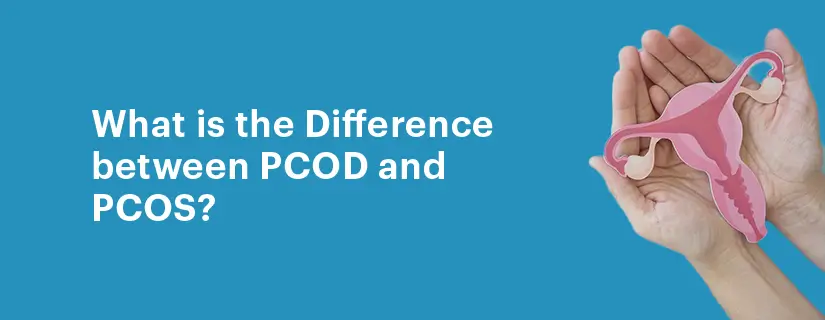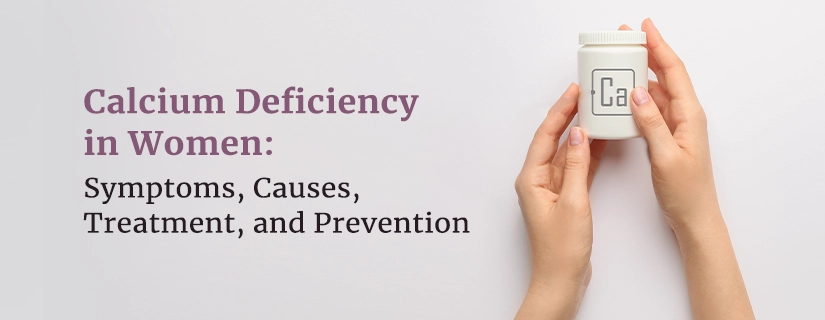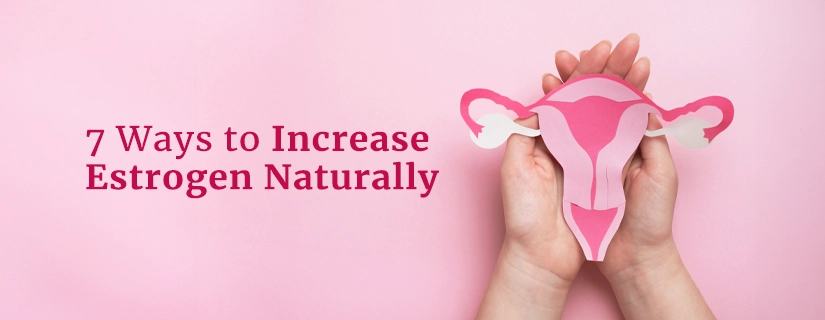-
Doctors
-
Specialities & Treatments
Centre of Excellence
Specialties
Treatments and Procedures
Hospitals & Directions HyderabadCARE Hospitals, Banjara Hills CARE Outpatient Centre, Banjara Hills CARE Hospitals, HITEC City CARE Hospitals, Nampally Gurunanak CARE Hospitals, Musheerabad CARE Hospitals Outpatient Centre, HITEC City CARE Hospitals, Malakpet
HyderabadCARE Hospitals, Banjara Hills CARE Outpatient Centre, Banjara Hills CARE Hospitals, HITEC City CARE Hospitals, Nampally Gurunanak CARE Hospitals, Musheerabad CARE Hospitals Outpatient Centre, HITEC City CARE Hospitals, Malakpet Raipur
Raipur
 Bhubaneswar
Bhubaneswar Visakhapatnam
Visakhapatnam
 Nagpur
Nagpur
 Indore
Indore
 Chh. Sambhajinagar
Chh. SambhajinagarClinics & Medical Centers
Book an AppointmentContact Us
Online Lab Reports
Book an Appointment
Consult Super-Specialist Doctors at CARE Hospitals
Blood Clots During the Period: Is it Normal?
Updated on 4 January 2024

Table of Content
- Are blood clots during the period normal?
- How Do We Differentiate Between Normal and Abnormal Clots During the Period?
- What are the Causes of Clots During the Menstruation Period?
- What are the Main Complications of a Heavy Bleeding Period With Clots?
- Is Diagnosing the Cause of Heavy Blood Clots During the Period Possible?
- What Is the Treatment of the Problems Related to Period Blood Clots?
- How to manage the symptoms of blood clots?
- FAQs
Menstrual clots or blood clots in period blood are something that happens to a lot of women during their period. Doctors often refer to them as menstrual coagula. They're like jelly-like blobs of blood cells or tissues from the uterus lining and a protein called fibrin that helps blood clot. Menstrual clots can come in various sizes, shapes, and colors, ranging from small and inconspicuous to larger, more noticeable clumps. The formation of menstrual clots is a normal part of the menstrual cycle for many women. Many of us may have a few questions surrounding menstrual clots: What are the reason for blood clots in periods? Do they denote something wrong in my body? When should I consult a doctor? Let us answer these questions one by one.
Are blood clots during the period normal?
For most of us, normalcy means period but no blood clots. It can be surprising and unsettling to notice thick globs of menstrual blood, but here's something reassuring: usually, blood clots are normal in period. They don't necessarily indicate a problem, although occasionally, it might be a sign of an underlying health condition. The human body has a built-in defense mechanism for menstrual clots' thick, jelly-like texture. This mechanism prevents too much blood from escaping.
It is our body's way of taking care of itself, similar to clot formation when there's an injury to tissues, like a cut or laceration. These menstrual clots are common when the flow is heavier during the first two days of menstruation. These clots can come in different colors, ranging from bright red to a deeper, darker shade. Larger clots may even appear black. Towards the end of each period, the menstrual blood might take on a darker, more brownish hue as the blood becomes older and leaves the body at a slower pace.
How Do We Differentiate Between Normal and Abnormal Clots During the Period?
Many of us may find it difficult to distinguish between what's considered "normal" and what might be a cause for concern when it comes to menstrual clots. We also need clarification on the different types of blood clots during the period.
If you come across small clots happening occasionally, you do not need to worry about it. These smaller clots, appearing bright or dark red, are usually common in the menstrual cycle.
On the other hand, if you regularly experience larger clots, exceeding the size of a quarter occurring more frequently, it could indicate an underlying medical condition.
|
Attributes |
Normal Clot |
Abnormal Clot |
|
Size |
Less than a quarter |
More than a quarter |
|
Frequency |
Occasional, usually at the start of the menstrual cycle |
More frequent |
|
Color |
Bright red or brown in color |
Purple, grey, orange, or black in color |
If you find yourself dealing with heavy menstrual bleeding, it is always better to consult a doctor. Heavy menstrual bleeding is when you need to change your tampon or pad every two hours or less, consistently, for several hours.
What are the Causes of Clots During the Menstruation Period?
Menstrual blood generally coagulates in the uterus or vagina, similar to the clotting on an open skin wound. The consistency of menstrual blood varies throughout the menstrual cycle and from one period to another. It's normal for flow to be heavier with clots one month and lighter with no clots the next. These changes are part of the natural menstrual cycle. Heavy periods with clots can also be due to various diseases, such as:
- Endometriosis: Endometriosis is a condition where the tissue that normally lines the inside of your uterus, known as endometrial cells, starts to grow outside the uterus. This abnormal growth can occur on the ovaries, fallopian tubes, the outer surface of the uterus, and even on other organs within the pelvis. Endometriosis can cause a range of symptoms, including:
- Painful Periods (Dysmenorrhea): This pain can begin before your period and extend several days into it. The pain may be more intense than typical menstrual cramps.
- Pelvic Pain: This can occur both during menstruation and at other times during the month, often becoming chronic.
- Discomfort During Sex: Pain during or after intercourse is common in those with endometriosis.
- Infertility: Endometriosis is sometimes first diagnosed in those seeking treatment for infertility.
- Nausea and Fatigue: These symptoms can be particularly severe during menstruation.
- Abnormal Bleeding: This may include heavy periods (menorrhagia) or bleeding between periods (spotting), which can also involve clotting.
- Adenomyosis: Adenomyosis occurs when the tissue that normally lines the uterus (the endometrium) starts to grow into the muscular wall of the uterus. This condition causes the uterus to become enlarged and can lead to:
- Heavy Menstrual Bleeding: Periods may be much heavier than usual, lasting longer than the typical duration.
- Severe Cramps: These can be intense and last throughout the menstrual period.
- Enlarged Uterus: In some cases, the uterus can become tender and significantly enlarged, sometimes resembling the size it would be during pregnancy.
- Chronic Pelvic Pain: Discomfort can be persistent and not just limited to menstruation.
- Cancerous Tumors in the Uterus and Cervix: Cancerous tumors in the uterus (endometrial cancer) or cervix (cervical cancer) can be a serious cause of heavy menstrual bleeding. These tumors can disrupt the normal shedding of the uterine lining, leading to:
- Heavy or Irregular Menstrual Bleeding: This can include periods that are much heavier than normal or bleeding between periods.
- Postmenopausal Bleeding: Any bleeding after menopause is a red flag and should be evaluated promptly.
- Pain: Pelvic pain may also occur, particularly as the cancer advances.
- Hormonal Imbalances: The hormones estrogen and progesterone regulate the menstrual cycle. An imbalance in these hormones can lead to changes in the uterine lining, resulting in:
- Heavy Menstrual Bleeding: This can occur when there is too much estrogen relative to progesterone, causing the endometrial lining to thicken excessively before it sheds.
- Causes of Hormonal Imbalance: This imbalance can be due to various factors, including:
- Perimenopause and Menopause: As you approach menopause, hormone levels can fluctuate significantly, leading to irregular or heavy periods.
- Stress: High levels of stress can disrupt hormone production, leading to menstrual irregularities.
- Significant Weight Changes: Both weight gain and loss can affect hormone levels, particularly estrogen, which is stored in fat tissue.
- Early Pregnancy Loss (Miscarriage): Many pregnancies end in miscarriage, often before the person is even aware they are pregnant. Early pregnancy loss, usually within the first 12 weeks, can lead to:
- Heavy Bleeding: This may be heavier than a regular period and can include large blood clots.
- Severe Cramps: The pain can be intense and may feel like strong menstrual cramps or labor-like contractions.
- Clotting: The bleeding often includes clots, which may be tissue passing from the uterus.
- Von Willebrand Disease (VWD): Von Willebrand disease is a genetic bleeding disorder that affects the blood's ability to clot. While rare, it can cause:
- Heavy Menstrual Flow: This is often one of the first signs in people with VWD, and periods may be longer and heavier than normal.
- Easy Bleeding Tendency: This can include frequent nosebleeds, bleeding gums, or excessive bleeding from minor cuts.
- Family History: Since VWD is inherited, there may be a family history of bleeding disorders
What are the Main Complications of a Heavy Bleeding Period With Clots?
Heavy menstrual bleeding can result in iron deficiency anemia, marked by fatigue, weakness, paleness, shortness of breath, and chest pains.
Is Diagnosing the Cause of Heavy Blood Clots During the Period Possible?
Yes, it is possible to diagnose the reason for clots in periods. Your doctor will ask various questions about your medical history, perform a physical exam, ask for blood clotting during the period's symptoms, run blood tests, and conduct an ultrasound or other imaging tests to determine the cause of large blood clots during the period.

What Is the Treatment of the Problems Related to Period Blood Clots?
Doctors may prescribe hormonal contraceptives, such as progestin-releasing IUDs or birth control pills, to control heavy menstrual bleeding and menstrual clots. For those avoiding hormones, medications like tranexamic acid, which affects blood clotting, are an option.
Sometimes, the doctor may suggest surgical options, including dilation and curettage (D and C) for diagnostic or temporary relief and surgeries like myomectomy or hysterectomy for addressing conditions like fibroids.
The best way to manage menstrual clots is by controlling heavy menstrual bleeding.
- Medications: Medications are often the first step in treating blood clots during your period. They can help regulate your menstrual cycle, reduce bleeding, and manage any underlying conditions. Here are some common options:
- Hormonal Medications:
- Birth Control Pills: These pills help balance your hormones, making your periods lighter and reducing the chance of blood clots.
- Hormonal IUD: This small device is placed in the uterus and releases hormones that thin the uterine lining, which can help reduce heavy bleeding and clots.
- Progesterone Pills or Injections: These medications help reduce heavy bleeding by thinning the lining of the uterus.
- Non-Hormonal Medications:
- Pain Relievers (NSAIDs): Over-the-counter medications like ibuprofen can help reduce both pain and bleeding during your period.
- Tranexamic Acid: This medication helps your blood clot better, which can reduce heavy bleeding.
- Iron Supplements: If heavy bleeding has caused low iron levels (anemia), iron supplements can help boost your energy and overall health.
- Hormonal Medications:
- Surgery: If medications aren't enough, or if there's a specific problem like fibroids causing the clots, surgery might be an option. The type of surgery depends on what's causing the issue:
- Less Invasive Procedures:
- Hysteroscopy: This is a procedure where a doctor looks inside the uterus with a tiny camera and can remove small growths like polyps or fibroids that might be causing heavy bleeding.
- Endometrial Ablation: This procedure removes or destroys the lining of the uterus to reduce or stop heavy bleeding. It's usually recommended for women who don’t plan to have more children.
- Surgical Removal of Fibroids:
- Myomectomy: This surgery removes fibroids from the uterus while keeping the uterus intact, which is important if you want to have children in the future.
- Uterine Artery Embolization (UAE): This is a less invasive procedure that shrinks fibroids by cutting off their blood supply, helping to reduce bleeding and clots.
- Hysterectomy:
- Hysterectomy: This is the complete removal of the uterus. It’s a permanent solution that stops periods and is usually considered when other treatments haven’t worked and you’re done having children.
- Less Invasive Procedures:
How to manage the symptoms of blood clots?
Managing the symptoms of blood clots during your period involves a combination of lifestyle changes, over-the-counter remedies, and, in some cases, medical treatments. Here are some ways to help manage the symptoms:
- Use Heat Therapy: Applying a heating pad or hot water bottle to your lower abdomen can help relieve cramps and discomfort associated with heavy bleeding and clots.
- Stay Hydrated: Drinking plenty of water can help thin your blood, making it easier for your body to pass clots and reduce the severity of symptoms.
- Over-the-Counter Pain Relievers: Nonsteroidal anti-inflammatory drugs (NSAIDs) like ibuprofen can help reduce menstrual pain and bleeding. They can also help manage clotting by reducing the production of prostaglandins, which cause the uterus to contract.
- Wear the Right Protection: Choose high-absorbency pads or tampons on your heavy flow days to stay comfortable and prevent leaks.
- Rest and Relaxation: Taking time to rest, especially during the heaviest days of your period, can help manage symptoms and reduce stress, which may also help in reducing the severity of your period.
- Consult a Doctor for Medications: If over-the-counter options aren't enough, a doctor might prescribe medications like birth control pills, tranexamic acid, or progesterone to help control heavy bleeding and reduce clots.
- Monitor Your Diet: Eating a balanced diet rich in iron can help prevent anemia, which is common with heavy bleeding. Consider iron supplements if recommended by a doctor.
- Consider Medical Treatment for Underlying Conditions: If your clots are caused by conditions like fibroids or endometriosis, medical treatments such as surgery or hormonal therapies may be necessary to manage symptoms effectively.
When Should I Consult With the Doctor for Menstrual Clots?
If you experience large blood clots exceeding the size of a grape, it's advisable to seek prompt medical advice. Large blood clots can indicate a heavy period, which may signal an underlying and potentially serious medical issue. When your period is unusually heavy, leading to the need to change a pad or tampon every hour for an extended period, consulting with your doctor becomes essential.
ENQUIRY FORM
SELECT CATEGORIES
-
Neurosciences (16)
-
Neurology (37)
-
Neurosurgery (14)
-
Orthopaedics (48)
-
Oncology (33)
-
Obstetrics and gynecology (52)
-
Pulmonology (23)
-
Urology (20)
-
Nephrology (13)
-
Psychiatry (7)
-
Dietetics and Nutrition (111)
-
General Medicine (63)
-
Cardiac Sciences (32)
-
Vascular & Endovascular Surgery and Interventional Radiology (15)
-
Gastroenterology (46)
-
Endocrinology (23)
-
Plastic Surgery (10)
-
Critical Care Medicine (5)
-
COVID-19 (16)
-
Dermatology (16)
-
Emergency Care (1)
-
Ophthalmology (4)
-
Pediatrics (14)
-
Laparoscopic and Bariatric Surgery (8)
-
ENT (15)
-
Kidney Transplant (1)
-
Liver Transplantation and Hepatobiliary Surgery (5)
-
General Surgery (3)
-
Internal Medicine (5)
-
Medicine Information
Blood Spotting During Pregnancy: Is It Normal?
Ovulation: Signs & Symptoms, Cycle Timeline, and How Long Does Ovulation Last
YOU MAY ALSO LIKE
RECENT BLOGS
-

Preterm Birth (Premature Birth): Symptoms, Causes, Treatment and Prevention
13 May 2025
Read More
-

Rotablation Angioplasty: Benefits, Treatments, And Recovery Time
9 May 2025
Read More
-

What Is The Difference Between IUI and IVF?
9 May 2025
Read More
-

Venous Malformations: Causes, Symptoms, and Treatment
30 April 2025
Read More
-

Varicose Vein Foam Sclerotherapy: Treatment, Benefits, and Procedure
30 April 2025
Read More
-

Radiofrequency (RF) Ablation Treatment for Varicose Veins: Know More
30 April 2025
Read More
-

Varicose Vein Sclerotherapy: Treatment, Benefits, and Procedure
30 April 2025
Read More
-

Varicose Vein Endovenous Laser Ablation: Procedure, Benefits, Risks
30 April 2025
Read More
Have a Question?
If you cannot find answers to your queries, please fill out the enquiry form or call the number below. We will contact you shortly.

















































